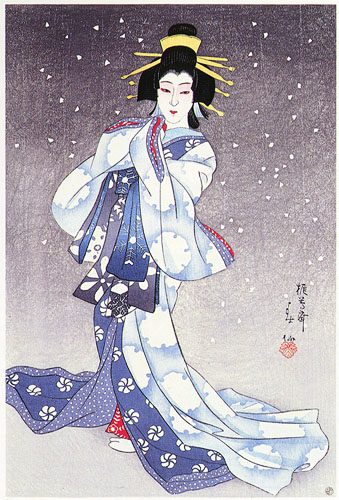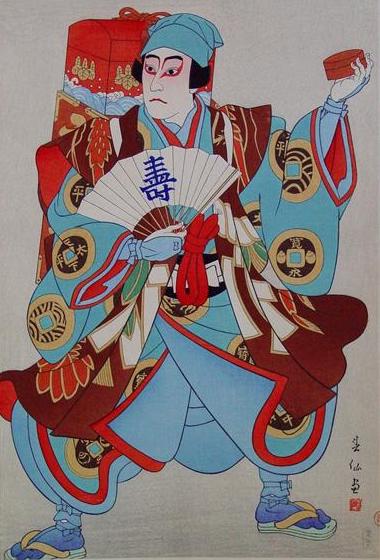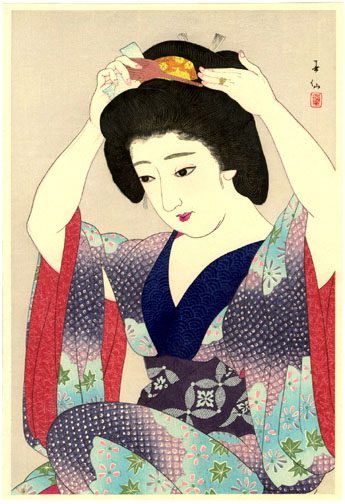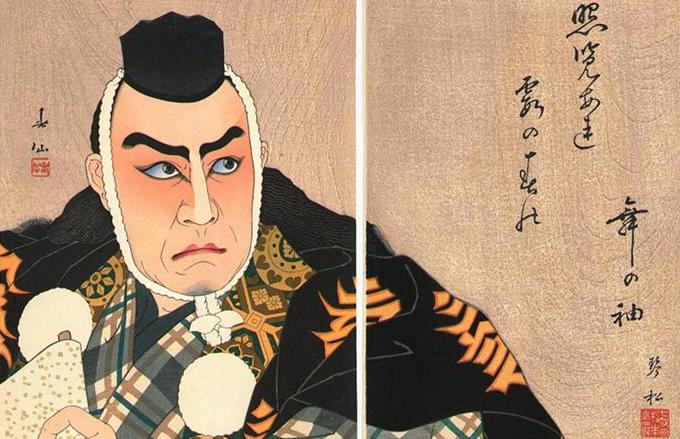Art of Japan and Natori Shunsen: Family tragedy and Kabuki
Lee Jay Walker
Modern Tokyo Times

The Japanese artist Natori Shunsen’s (1886-1960) final moments on this earth – and his wife – were similar to the most horrendous tragedies depicted in the world of Kabuki. Hence, the sadness of losing their beloved daughter led to a joint suicide pact at her grave.
The subject matter that enriched the art of Natori was kabuki. This entails the dramatic performances of actors shaped around despair, love, passion, rejection, tragedy, and other emotions of this world that are all too common.

Hence, with Natori and his wife being unable to accept the separation of their cherished daughter, who succumbed to pneumonia when only 22, the ultimate act of his life – and his wife – was a joint suicide at the grave of their beloved daughter. Thus, the once flourishing family based on hope led to the most tragic of all kabuki performances in their respective final enactments on this earth.
Natori was born in the Meiji Period (1868-1912). However, his art flourished in the Taisho and Showa periods of Japanese history. Also, despite the enormous changes that engulfed Japan in this period of Japanese history, the continuity of kabuki remained firmly embedded within his artistic soul.

The Minami Alps Art Museum reports, “Shin-hanga was a new style of woodblock print art, beginning from the Taisho period (1912-1926) into the Showa period (1927-1989). Its goal was to revive the Ukiyo-e art style. Unlike its predecessor, Shin-hanga was not confined to just media prints like actor portraits; it challenged many pieces of work with its modern techniques.”
Thus, the world of shin-hanga fascinated Natori and other esteemed artists of the Taisho Period (1912-1926). Natori had struggled with his painting career and turned once more to illustrations for newspapers (similar to 1907), portraits of actors, and the growing appeal of cartoons – and he also became an esteemed book publisher within powerful circles.

The British Museum says, “His career as a designer of woodblock prints of Kabuki actors began in 1915 with his participation in the five volumes of ‘Shibai shin nigao-e’, to which he contributed thirty portraits and two cover subjects, and with several prints for Watanabe from 1916.”

PLEASE DONATE TO HELP MODERN TOKYO TIMES
Modern Tokyo News is part of the Modern Tokyo Times group
DONATIONS to SUPPORT MODERN TOKYO TIMES – please pay PayPal and DONATE to sawakoart@gmail.com
http://moderntokyotimes.com Modern Tokyo Times – International News and Japan News
http://sawakoart.com – Sawako Utsumi personal website and Modern Tokyo Times artist
https://moderntokyonews.com Modern Tokyo News – Tokyo News and International News
PLEASE JOIN ON TWITTER
https://twitter.com/MTT_News Modern Tokyo Times
PLEASE JOIN ON FACEBOOK